| Developer(s) | The GNOME Project |
|---|---|
| Initial release | December 20, 1998[1] |
| Written in | C, C++, JavaScript, Python, Rust, Vala |
| Operating system | Unix-like |
| Platform | GTK |
| License | GNU General Public License |
| Website | apps |
The GNOME Core Applications are a software suite of approximately 30 application software that are packaged as part of the standard free and open-source GNOME desktop environment. GNOME Core Applications have the look and feel of the GNOME desktop, and often utilize the Adwaita design language. Some applications have been written from scratch and others are ports.
The employment of the newest graphical widgets offered by the latest version of GTK in order to implement the GNOME Human Interface Guidelines (HIG) ergonomically is the only feature which all GNOME Core Applications have in common. Most are graphical front-ends, e.g. GNOME Software, to underlying Linux system daemons, like e.g. journald, PackageKit, NetworkManager or PulseAudio.
Configuration
- Settings – main interface to configure various aspects of GNOME. Diverse panels represent graphical front-ends to configure the NetworkManager daemon and other daemons.
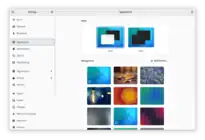 GNOME Settings
GNOME Settings
Communication
- Contacts – managing addresses
- Calls
Files
- Document Scanner
- Loupe – image viewer
- Evince – the document viewer
- Files – the file browser
- Music – audio player with database
- Videos – the media player
.png.webp)
.png.webp)
 GNOME Photos
GNOME Photos
System
- Connections - front-end for remote desktops. Introduced in GNOME 41.
- Disks
- Disk Usage Analyzer
- Extensions
- Fonts
- Logs – written in Vala, introduced with 3.12
- Help
- Software
- System Monitor
- Console (King's Cross)
- Web
- Terminal (replaced by Console)
.png.webp)
 GNOME Usage Analyzer
GNOME Usage Analyzer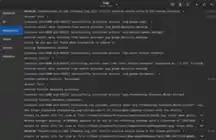 GNOME Logs
GNOME Logs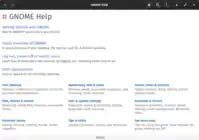 GNOME Help
GNOME Help
World
- Clocks
- Maps
- Weather
.png.webp) GNOME Clocks
GNOME Clocks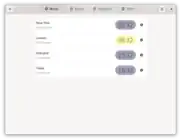 GNOME Clocks
GNOME Clocks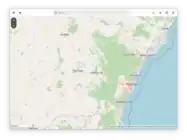 GNOME Maps
GNOME Maps GNOME Weather
GNOME Weather.png.webp)
Utilities
- Calculator
- Calendar
- Characters
- Snapshot
- Tour
- GNOME Text Editor (previously gedit)
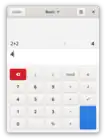
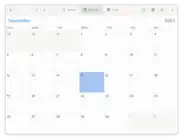 GNOME Calendar
GNOME Calendar
GNOME Circle
GNOME Circle is a collection of applications which have been built to extend the GNOME platform,[2] utilize GNOME technologies, and follow the GNOME human interface guidelines. They are hosted, developed, and managed in the GNOME official development infrastructure, on gitlab.gnome.org. Circle applications are not part of GNOME Core Applications.
References
- ↑ "first release".
- ↑ "GNOME Circle". circle.gnome.org. Retrieved 2023-11-28.
External links
- apps
.gnome (homepage).org